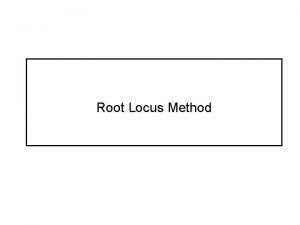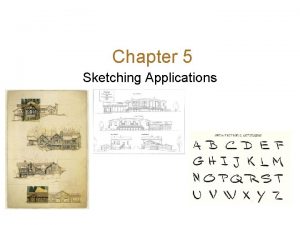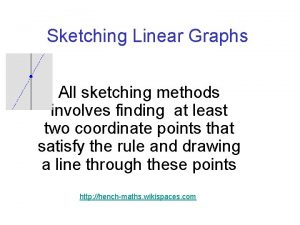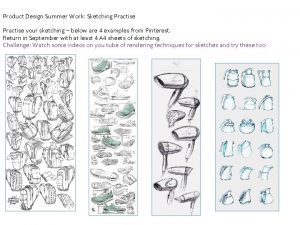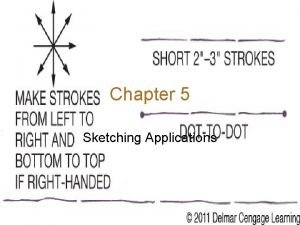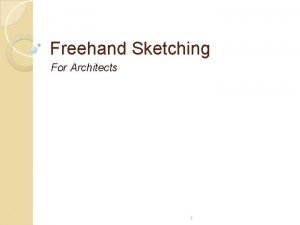Concept Sketching Introduction to Engineering Design All content















- Slides: 15

Concept Sketching Introduction to Engineering Design All content and images © 2016 Project Lead The Way, Inc. unless noted otherwise.

Concept Sketch A graphical representation of an idea that can quickly communicate design intent and details All content and images © 2016 Project Lead The Way, Inc. unless noted otherwise.

Concept Sketch Can be quickly and roughly drawn to document brainstormed ideas or show more detail and include shading to communicate more precise information Accessible Snowboard Image courtesy of the National Museum of American History, Behring Center © 2016 Project Lead The Way, Inc.

Concept Sketch Can include annotations to better explain technical details Image courtesy of National Museum of American History, Behring Center © 2016 Project Lead The Way, Inc.

Concept Sketch Images courtesy National Museum of American History, Behring Center Historical example from an engineering notebook © 2016 Project Lead The Way, Inc.

Concept Sketch – Your Turn All content and images © 2016 Project Lead The Way, Inc. unless noted otherwise.

Shading A few notes: • Shading makes your drawings appear more realistic by adding depth and contrast • Pencil hardness – Artist pencils vary in hardness Typical school pencil hardness HB – It is easier to shade with a softer pencil All content and images © 2016 Project Lead The Way, Inc. unless noted otherwise.

Shading Step 1. After you have created a line drawing, make a value scale using your pencil(s). This will help you determine the darkness of your shading as you work. Values that may work for a dark colored object a light colored object Few items will require the full spectrum All content and images © 2016 Project Lead The Way, Inc. unless noted otherwise.

Shading Step 2. Locate your light source and make a mental note. • Areas closest to the light will be lighter • Areas further from the light will be darker lightest darkest All content and images © 2016 Project Lead The Way, Inc. unless noted otherwise.

Shading Step 3. Apply shading to your sketch. Refer to your subject frequently to compare it with your sketch. All content and images © 2016 Project Lead The Way, Inc. unless noted otherwise.

Shading used for dispenser used for tape Value Scale All content and images © 2016 Project Lead The Way, Inc. unless noted otherwise.

Concept Sketch – Your Turn All content and images © 2016 Project Lead The Way, Inc. unless noted otherwise.

With Shading All content and images © 2016 Project Lead The Way, Inc. unless noted otherwise.

Drawing a cylinder

Draw a sphere
 Pltw concept sketching
Pltw concept sketching Concept sketching engineering
Concept sketching engineering Engineering pictorial drawing
Engineering pictorial drawing Characteristics of esp
Characteristics of esp Static content vs dynamic content
Static content vs dynamic content Name three line segments
Name three line segments Concept of content analysis
Concept of content analysis Baseline method of sketching
Baseline method of sketching Sketch chapter 3
Sketch chapter 3 Why are crime scene sketches important
Why are crime scene sketches important Root locus sketching
Root locus sketching Multiview sketch definition
Multiview sketch definition Draw the missing view
Draw the missing view Dr frost sketching quadratics
Dr frost sketching quadratics Sketch graph of quadratic function
Sketch graph of quadratic function How to draw reciprocal graphs
How to draw reciprocal graphs










